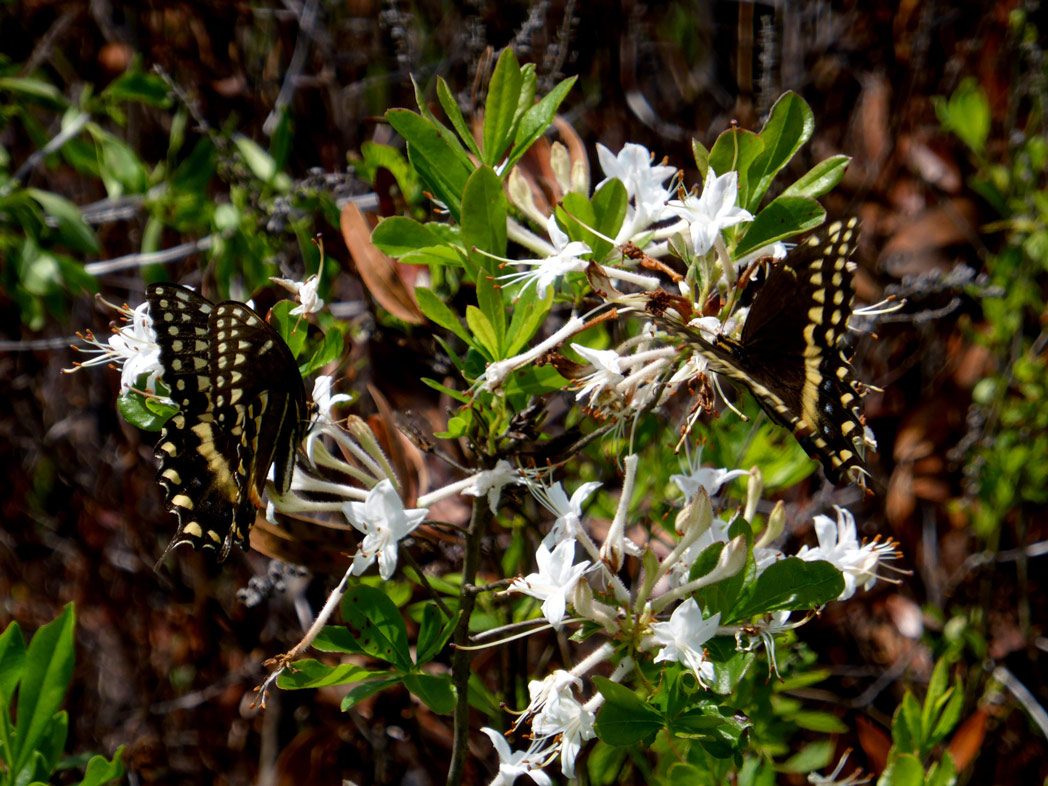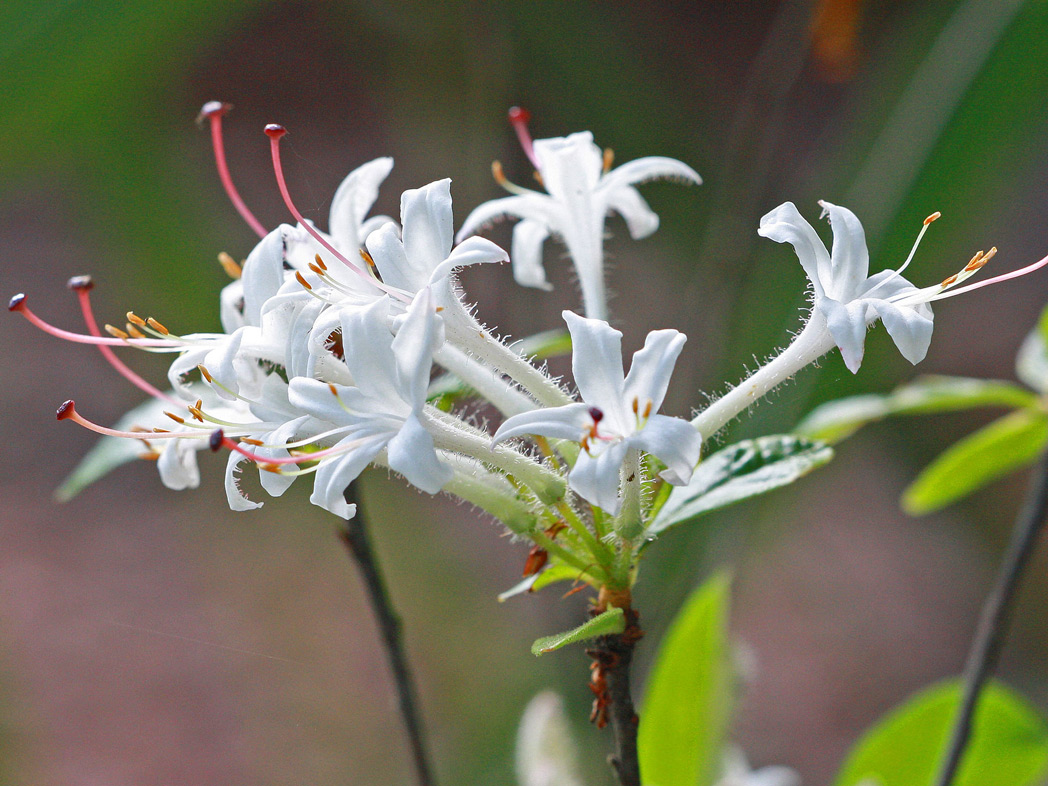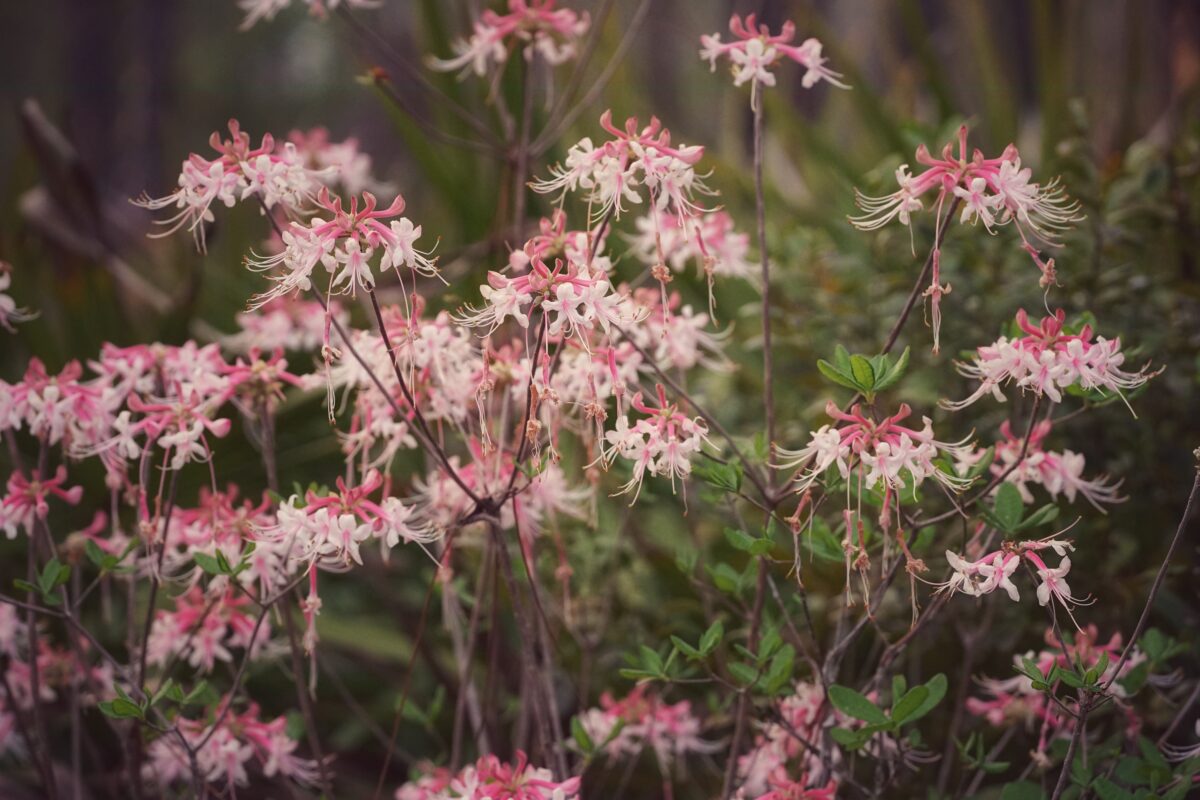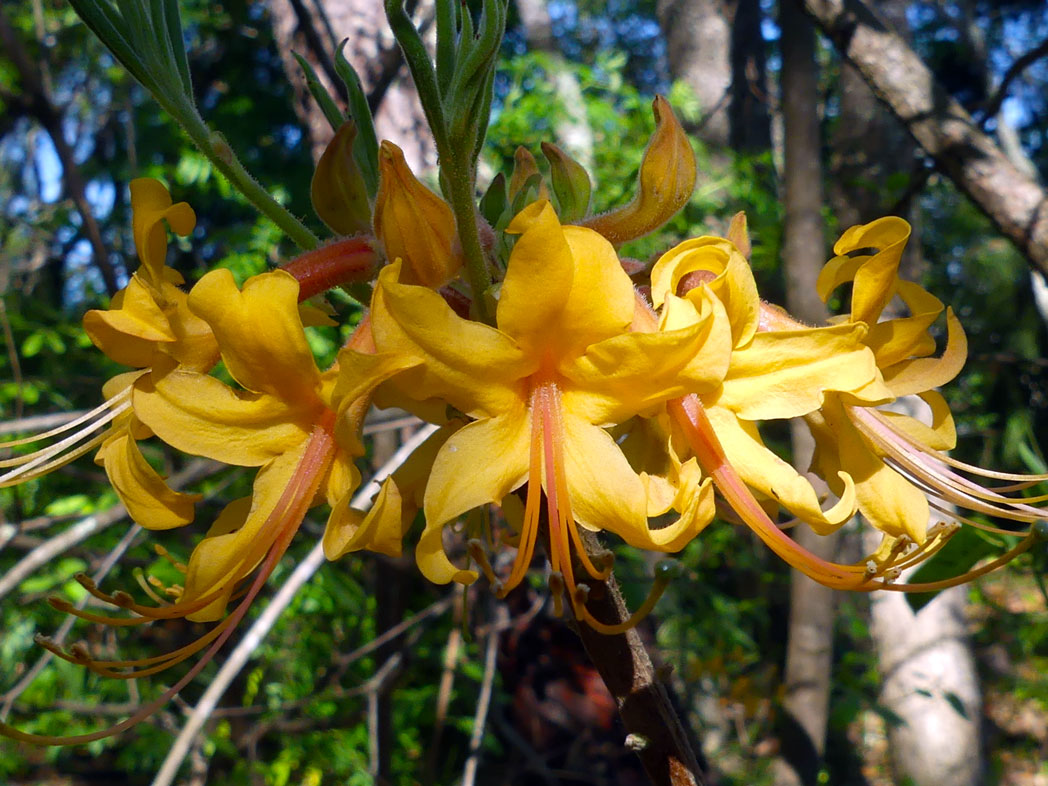Swamp azalea
Pictured above: Swamp azalea (Rhododendron viscosum) by Mary Keim. Click on terms for botanical definitions. View post as a PDF.
Swamp azalea (Rhododendron viscosum) is a long-lived perennial shrub to small tree with fragrant, showy blooms. It occurs naturally in wet flatwoods, seep and bay swamps and along lake margins. It flowers in midsummer and is attractive to a variety of pollinators, including hummingbirds. Swamp azalea is Florida’s only white-flowered and summer-blooming rhododendron.

Flowers are white and may be tinged with pink. The long corolla is tubular and covered in sticky, gland-tipped hairs. It opens into five lobes, exposing five conspicuous stamens that extend well beyond the corolla. Leaves are simple and elliptic to oblong with a minute tooth at the apex. They are alternately arranged. Leaf margins are finely pubescent.
The genus Rhododendron comes from the Greek rhodon, or “rose,” and dendron, or “tree.” The species epithet viscosum refers to the viscous glands on the corolla tube.
Family: Ericaceae (Heath family)
Native range: Panhandle, North and Central Florida
To see where natural population of Swamp azalea have been vouchered, visit www.florida.plantatlas.usf.edu.
Lifespan: Perennial
Soil: Moist to wet, organic soil
Exposure: Filtered shade
Growth habit: 4–6’+ tall, often twice as wide
Propagation: Seeds, cuttings, layering
Florida regions of landscape suitability: North, Central
Garden tips: Swamp azalea may be difficult to establish in a home landscape as it requires moisture throughout the summer. Although shade-adapted, it can tolerate sunlight and does well in canopied areas with light gaps and on edges where it receives dappled sunlight. It is not salt tolerant.
Swamp azalea plants are often available at nurseries that specialize in native plants. Visit PlantRealFlorida.org to find a native nursery on your area.
Learn more about Swamp azalea from the Florida Native Plant Society and the Institute for Regional Conservation.
For information on other Rhododendron species, see these resources:



